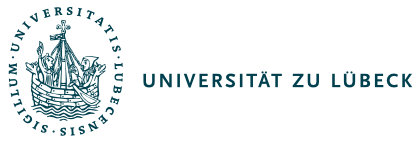Duration:
2 Semester | Turnus of offer:
each year, can be started in winter or summer semester | Credit points:
6 |
Course of studies, specific field and terms: - Master Infection Biology 2023 (compulsory), Interdisciplinary modules, 1st and 2nd semester
- Master Infection Biology 2018 (compulsory), Interdisciplinary modules, 1st and 2nd semester
|
Classes and lectures: - Part A: Applied Biostatistics (exercise, 1 SWS)
- Part B: Epidemiology (lecture, 2 SWS)
- Part A: Applied Biostatistics (lecture, 3 SWS)
| Workload: - 90 Hours private studies
- 90 Hours in-classroom work
| |
Contents of teaching: | - Part A: Applied Biostatistics
- Descriptive statistics
- Inferential statistics (estimation and testing)
- Comparison of central tendencies
- Association and correlation
- Regression analysis (linear and logistic)
- Introduction to statistical programming
- Practical application of statistical methods
- Part B: Applied Epidemiology
- Introduction to epidemiology
- Measures of frequency (incidence, prevalence, etc.)
- Medical diagnosis (sensitivity and specificity, etc.)
- Epidemiology of infectious diseases
- Outbreak investigation
- Causality
- Study designs (randomised controlled trial, cohort study, case control study, cross sectional study)
- Random error, bias and confounding
- Critical appraisal
| |
Qualification-goals/Competencies: - Part A: Applied Biostatistics
- Students are able to understand, explain and interpret results from common statistical analyses
- Students are able to choose adequate statistical methods for a given research problem
- Students are able to conduct basic statistical analyses using pen-and-pencil and statistic software. They are able to write answer sentences by applying the definition of the calculated measure to their result.
- Part B: Epidemiology
- Students are able to understand, explain and interpret epidemiological measures and other results from epidemiological research
- Students are able to understand and explain technical terms used in epidemiology
- Students are able to choose adequate study designs for given research problems and discuss their advantages and limitations (including possible sources of error, bias and confounding) and
- Students are able to judge if results from a particular study are valid or biased and what can be concluded from them (for example in terms of causality)
- Part A and B
- Soft skills: The students' communication competencies and capacity to team work should be increased by means of small group discussions
|
Grading through: |
Responsible for this module: Teachers: - Dr. rer. hum. biol. Nora Eisemann
|
Literature: - Bland: An Introduction to Medical Statistics - 4th edition - Oup Oxford, 2015
- Field, Miles: Discovering Statistics Using R. - Sage Publications, 2012
- Fletcher & Fletcher: Clinical Epidemiology. The Essentials. 5th edition - Philadelphia: Wolters Kluwer/Lippincott Williams & Wilkins, 2014
|
Language: |
Notes:Admission requirements for taking the module:
- None
Admission requirements for participation in module examination(s):
- None
Module Exam(s):
If both partial examinations have been successfully passed, the final grade will be awarded based on the total percentage of points achieved
- MA1610-L1: Applied Biostatistics, oral exam (winter semester), 30 min, 50% of final module grade
- MA1610-L2: Epidemiology, oral exam (summer term), 30 min, 50% of final module grade |
Letzte Änderung: 29.7.2022 |



















für die Ukraine